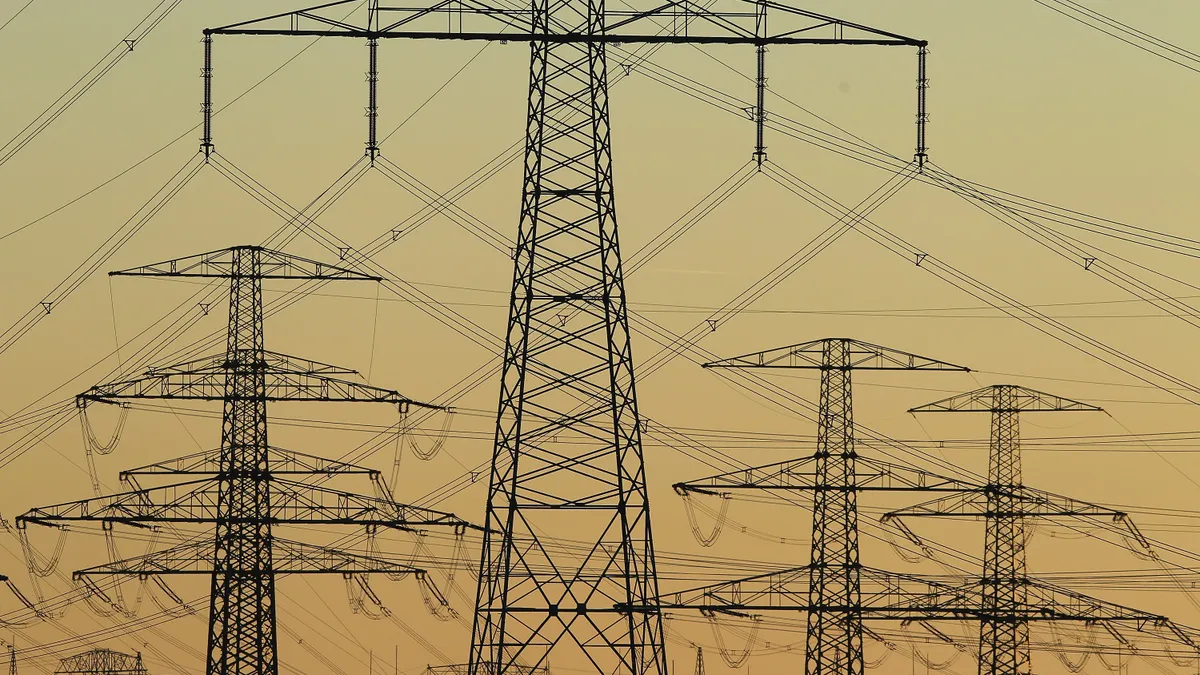Dive Brief:
- There are "elevated" grid reliability risks this winter for regions of the United States that are vulnerable to extreme weather, natural gas supply disruptions and low hydro conditions, the North American Electric Reliability Corp. said Thursday in its 2021-22 Winter Reliability Assessment.
- The threat is most severe in the Electric Reliability Council of Texas territory, where electricity demand could outstrip capacity reserves by more than 37% in the most extreme scenarios. Should peak demand or generator outages dramatically exceed forecasts, NERC warned "energy emergencies" are possible in the Southwest Power Pool and Midcontinent Independent System Operator territories, along with Texas.
- California and New England have limited gas infrastructure, and prolonged periods of cold temperatures could result in curtailments to generators, NERC found. Other Western areas, beyond California, are facing drought conditions which could reduce electricity available for transfers between different parts of the country.
Dive Insight:
NERC produces two broad reliabilty assessments every year, ahead of the summer and winter peaking seasons, to evaluate generation resources and transmission system adequacy. But following extreme weather in February that knocked out power to millions in Texas and the Midwest, the reliability agency has altered its approach to the reports.
The latest iteration is a "step change" in how NERC conducts the assessments, John Moura, NERC's director of reliability assessment and system analysis, said in a Thursday call with reporters.
"While in prior assessments we were focused on capacity, normal climate and generation outages, we're now much more focused on energy needs and the ability to withstand extreme weather conditions. ... The question is less about whether there's enough capacity," Moura said, and more about whether the winter energy plan is "resilient to extreme weather, and other extreme conditions."
Utilities across NERC's system have retired more than 70 GW of baseload generation in the last decade, Moura noted, and have replaced it with new gas and variable generation resources.
"And of course, those have increasingly become weather dependent," he said. "Extreme weather exacerbates the challenges of that transforming grid in really unique ways. And this transition that we're seeing really requires the electric industry to reconsider how we plan and operate the system."
NERC has identified reliability risk as being "elevated in regions that are especially vulnerable to extreme weather" or where gas supply or drought conditions could impact generators, Mark Olson, NERC's manager of reliability assessments, said during the Thursday conference call.
"We are advising the industry to ensure the readiness of their operating plans to manage potential supply shortfalls, and to take proactive steps for generator readiness, fuel availability, and sustained operations," Olson said.
To reduce the chance of outages, NERC issued a series of recommendations for utilities, grid operators and balancing authorities.
Balancing authorities and reliability coordinators should "conduct drills on alert protocols" to practice signaling the need for conservative or restrictive maintenance periods, NERC said. And they should work with generators to "verify protocols and operator training for communication and dispatch."
Grid and power plant operators should review NERC's winter readiness guidelines, the report said, while utilities should examine non-firm customer inventories and rolling blackout procedures "to ensure that no critical infrastructure loads" are affected. Those include natural gas infrastructure needed to supply power plants.
The February blackouts in Texas and the Midwest resulted from cold temperatures forcing generation offline, and in many cases gas-fired plants struggled to procure fuel, according to a joint report released Tuesday by the Federal Energy Regulatory Commission and NERC. In some instances, that occurred when blackouts impacted the natural gas supply system.
Texas regulators in October voted to require generators and transmission providers to weatherize their plants and systems ahead of the upcoming winter, and they indicated a more robust year-round standard is also in development.
NERC surveyed generators and concluded the majority have operating plans in place for near term winter operation, said Olson. However, "we found that generator resource availability could again suffer as a result of equipment failure, or lack of fuel under severe winter conditions."
Fuel availability for fossil-fired generators "is a concern that's being closely monitored this winter, as energy shortages are affecting supplies globally," Olson said. "Coal stockpiles have declined rapidly in the last few months ... [and] natural gas storage in parts of the country are below the the five-year average and below levels from last year."
According to the U.S. Energy Information Administration, coal-fired electricity generation is on pace to rise by 22% in 2021, in part due to higher gas prices.
"There's not an immediate concern" for bulk power system reliability, Olson said. "But it is something to be monitored and we're urging fossil fire generator owners to give special attention to supplies because late stage acquisitions this winter could be particularly challenging."














